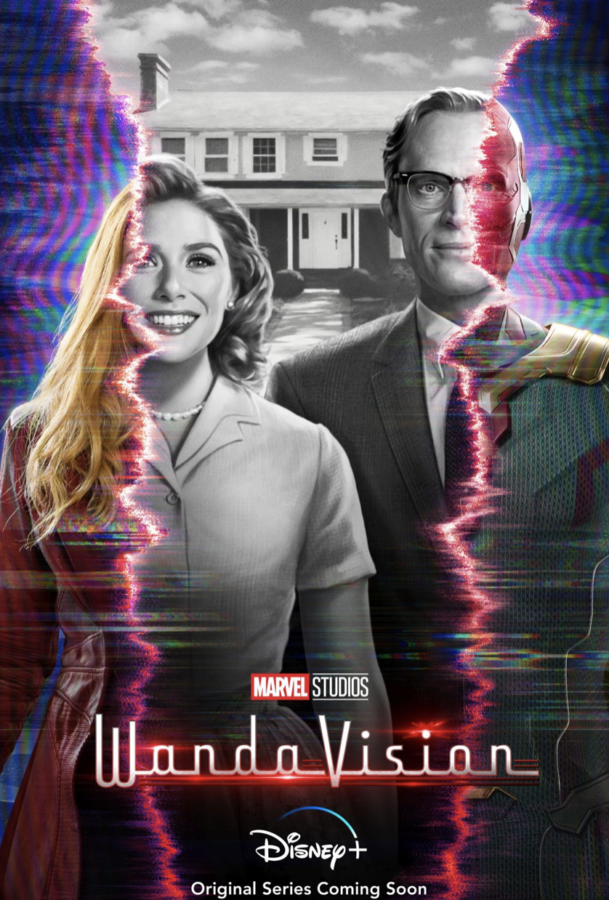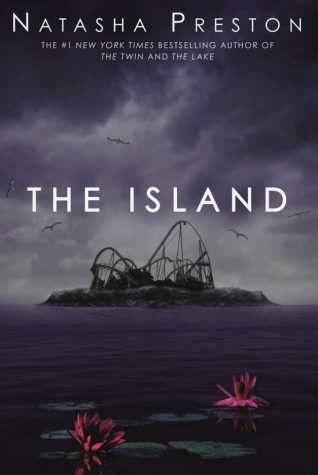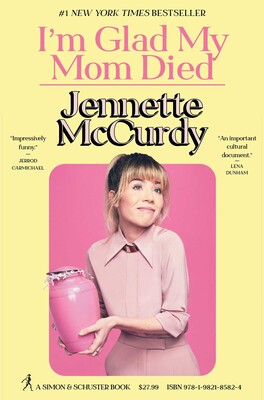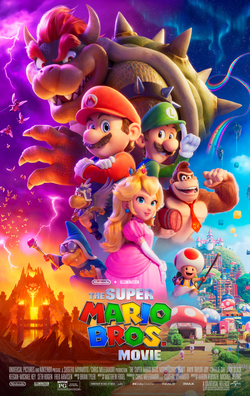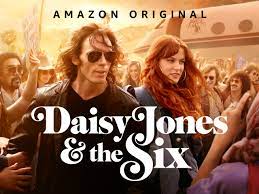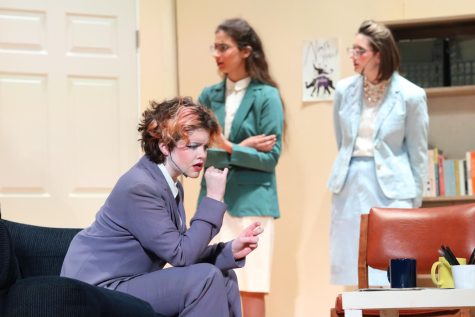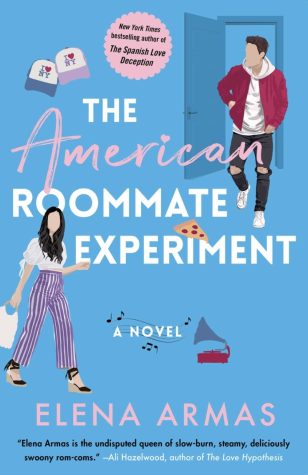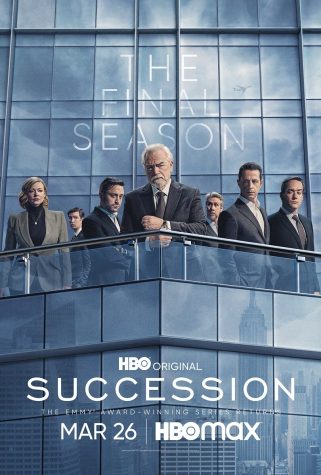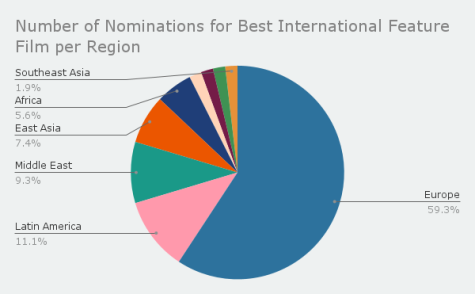WandaVision comes to a successful and eventful close
WandaVision has officially set a new precedent for what TV series budgets can look like.
I enjoy TV shows that put in extra effort whether that be with Easter eggs, accurate historical sets and costumes, well-written characters or interesting special effects. Special effects and detailed sets come with a large price and oftentimes make studios veer away from overly extravagant productions.
So, when WandaVision came out boasting a $200 million budget, I was beyond excited to see what modern graphics and details would be incorporated.
I started the first episode about three weeks after it originally aired. WandaVision had a weekly release schedule with its 9 episodes coming out over a span of ten weeks. I was beyond impressed by the detail and overall show production, after watching the first three episodes. The show features Wanda Maximoff (Elizabeth Olsen) and Vision (Paul Bettany), a Marvel Cinematic Universe power couple from previous films, in different styles of TV shows from the past.
The first episode was similar to “I Love Lucy” or “The Dick Van Dyke Show,” and the producers of WandaVision definitely utilized their large budget to their advantage. Each episode features a completely different set, costumes, style of film, and an opening sequence that corresponds to the era of the episode. I really enjoyed the attention to detail and how at home each episode made me feel. They all felt genuine to the shows they were paying homage to, which I found to be comforting.
While the ambiance of the show is comforting overall, the actual plot and undertones of it are far from it. There was a certain type of suspense and ominous build up to the show that gave me chills every single time. The show begins with a lot of unknowns as in the last Avengers film, “Avengers: Endgame,” when half of the characters (and MCU citizens) are ultimately killed by the main antagonist Thanos. Vision dying was a key part of the film as it was a sacrifice Wanda had to make to save the universe. Although, to my surprise, the show opened with him alive and well within a 50s sitcom.
As the episodes continued, a darker layer was revealed and MCU’s SWORD government group became involved. The audience was reunited with astrophysicist Darcy Lewis
(played by Kat Dennings) from the Thor movies after about three episodes. The show then began going from the sitcoms that Wanda and Vision were in to the current SWORD group trying to figure out how Wanda was creating these sitcoms. I really enjoyed the sort of slow burn that the show had as the episodes were only 30 minutes long and viewers don’t really understand how Wanda has created the sitcoms, how Vision appears to be alive or why SWORD is so interested, until the 8th episode. The dialogue between the characters wasn’t very revealing of any of the answers to my main questions but there were very small and ominous nods to some. I loved looking for tiny details or clues throughout every episode and it gave a bit of an interactive twist to the slow burn.
While looking for easter eggs on my own was fun, going on social media after each episode was, as well. It was unifying to see the community of MCU fans try to come and piece together the hidden storyline within the show. It seemed like every episode I missed two or three Easter eggs that gave nods to the comics, past movies, or even the X-men universe.
This new age of magic that WandaVision has created begs the question of what Marvel has in store for the future. I suspect that Dr. Strange will play a part in some of MCU’s future films that feature Wanda, as this show has illustrated Wanda as a little bit of a villain herself. While Wanda did use her own magic to mind control a random town and create the sitcoms, it is revealed that she did so out of heartbreak and despair after Vision’s death.
The series finale very neatly tied the show together as the villains, Agatha Harkness and SWORD Agent Hayward, go to prison and the town Wanda had been enchanting to star in her own sitcom returned to normal. I liked the sad but simple ending of the show, and I think that it worked well with the overall pacing of the episode as it didn’t seem rushed. The end of the actual episode wasn’t what excited me the most; it was the added scene after the end credits.
The scene showed Wanda floating in the air and seemingly practicing her magic inside an empty house. The scene directly parallels with a scene from “Doctor Strange” as Dr. Strange practiced his magic in the same way when he first discovered it during his own movie. This direct nod to his movie makes me very hopeful and eager to see the two work together in a coming film.
Your contribution will allow us to cover our annual website hosting costs, which are no longer covered by our district/school. If we do not meet our goal, we may lose this website and its archive of stories covering 2009-2023. Student journalists at Lane Tech use this archive to research past coverage of various topics and link to past stories to offer readers additional context for current stories. Thank you for supporting the award-winning reporting and writing of journalism students at Lane Tech College Prep!
Background information on why the school district no longer allows our school to cover web hosting costs:
https://lanetechchampion.org/12583/uncategorized/special-coverage-impact-of-soppa-on-cps-students-teachers/
https://lanetechchampion.org/11702/opinion/staff-editorial-cpss-soppa-policy-is-choking-students-learning-and-the-champion/
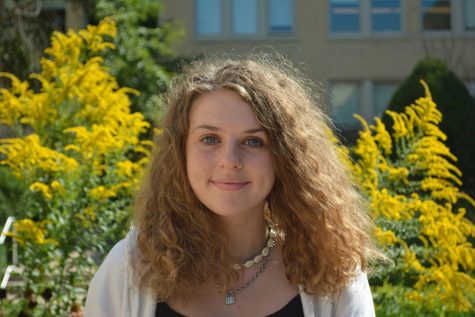
Ella, a senior, is enjoying her third and final year with The Champion (formerly The Warrior). She continues to explore the world of literature and history...

